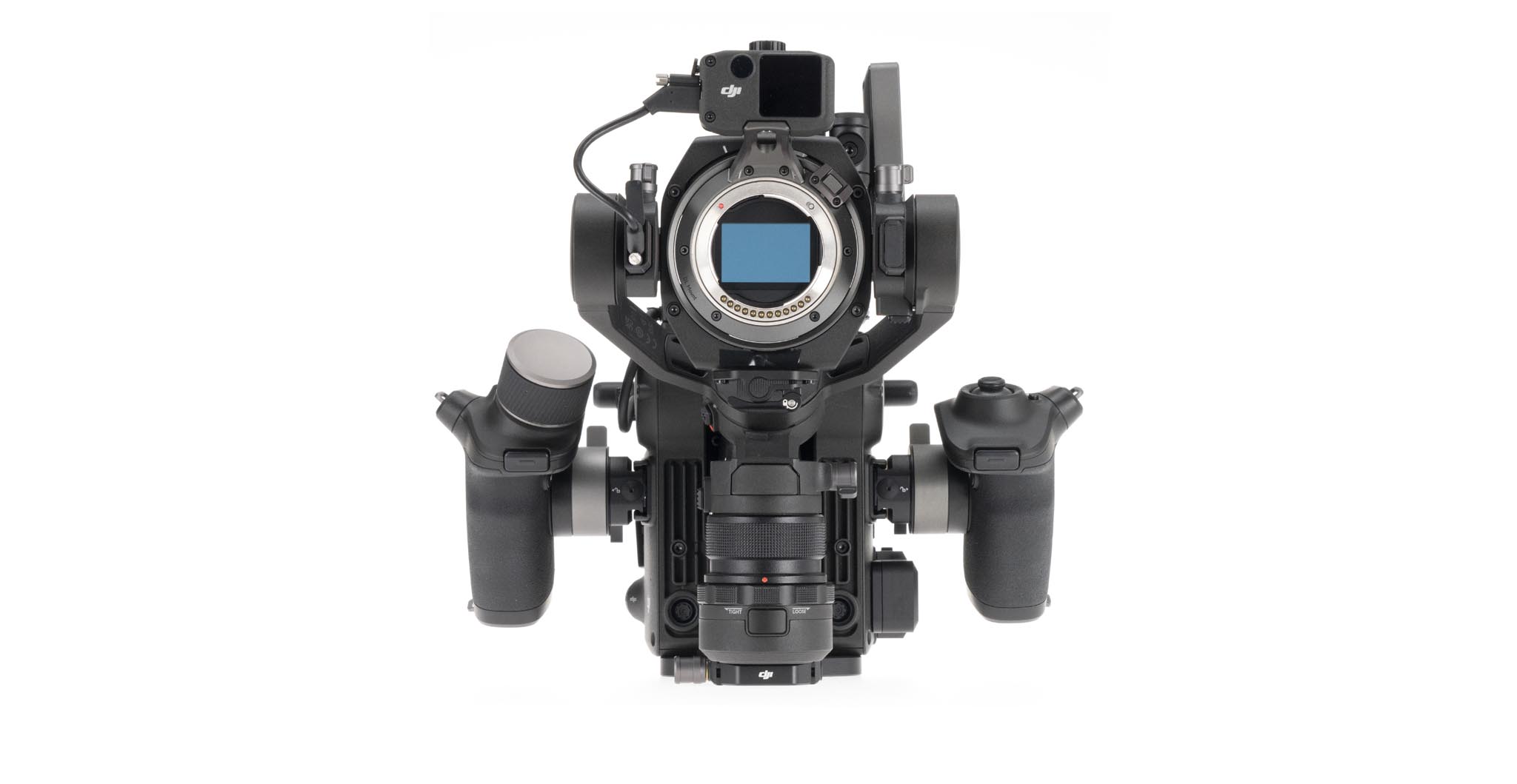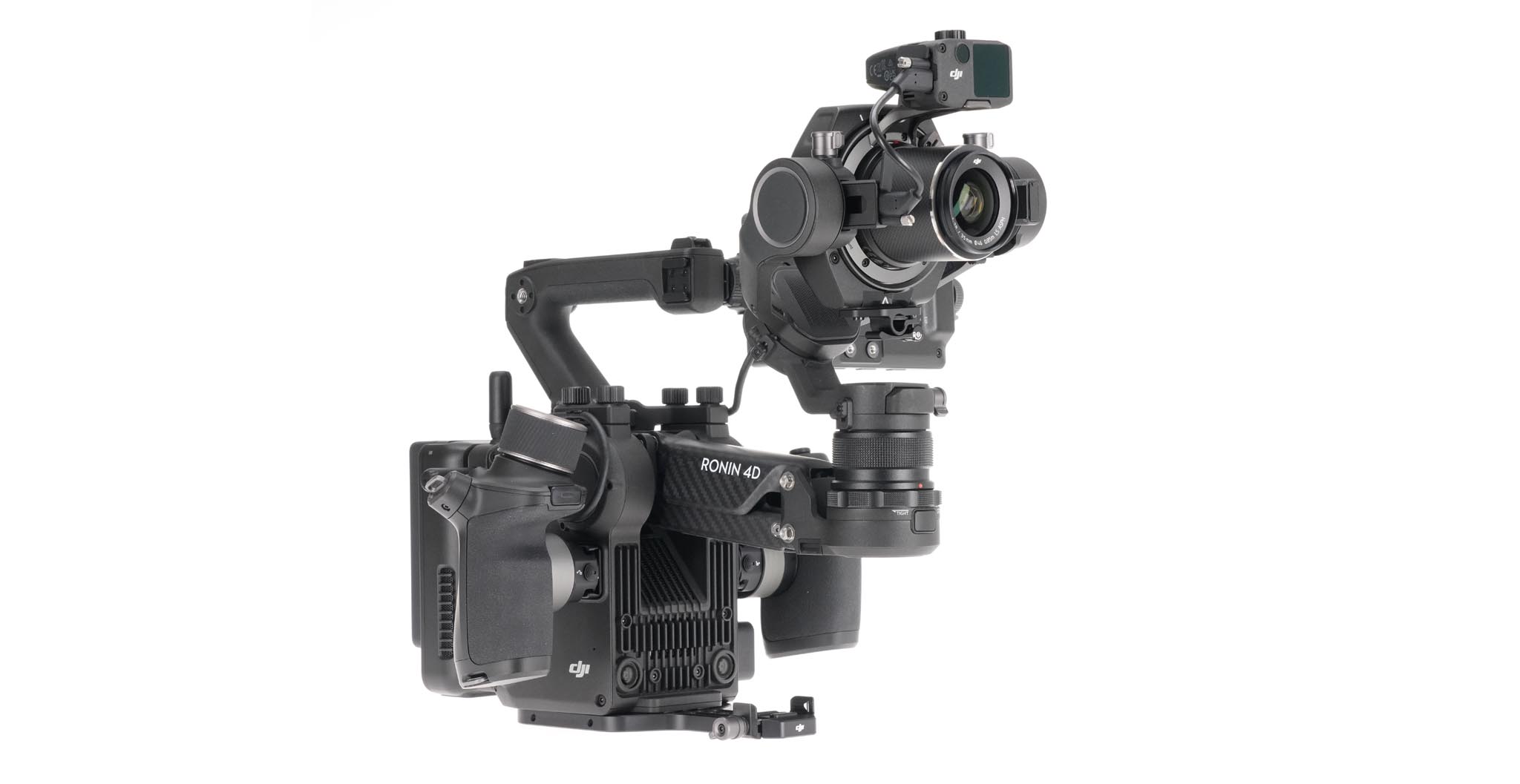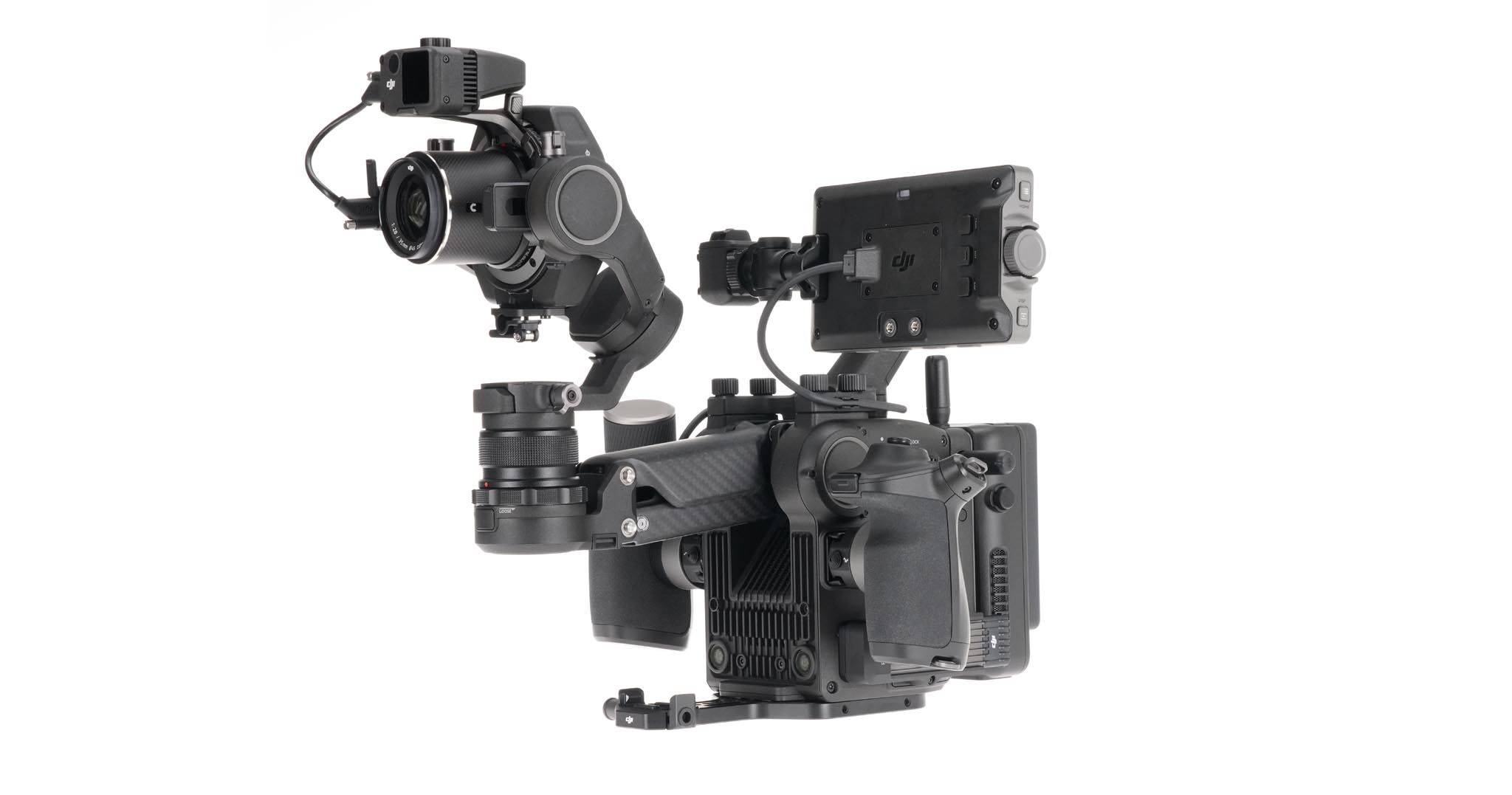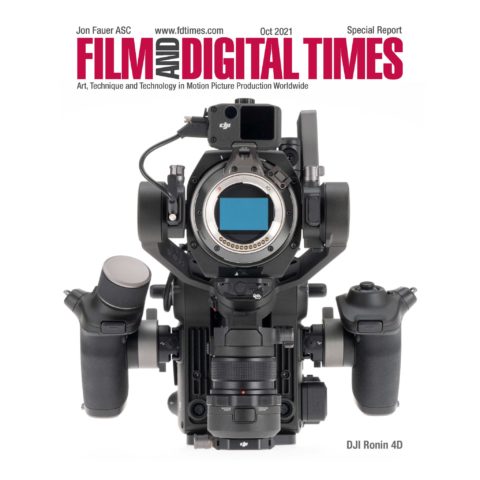This is one of the most captivating cinema cameras since, well, the birth of cinema.
I hear howls calling for superlative deleted, but please indulge this attention-grabbing opening line for a few moments.
The DJI Ronin 4D is like a polymath convergence of primordial portable 1895 Lumière Brothers Cinématographe, mixed with 1970s Aaton LTR, styled by a dreamed-up team of DaVinci, Gaudí and Ive, commingled with stabilizers, Lidar, integrated wireless video and wireless control, inspired by Inspire 2, Zenmuses and ancestral Ronins. It is an astonishly seamless cinematographic system.
The DJI Ronin 4D launched today, October 20, 2021. It is a Full Frame cine camera system consisting of 4-axis stabilizer, Lidar focus assist, integrated video TX and RX, onboard and wirelessly connected monitors, dual handgrips with efficient local and remote camera and lens control.
There are two models. Ronin 4D with 8K sensor will record 8K 8192×4320 (17:9) up to 60 fps 12-bit at a maximum data rate of 506 MB/s. The Ronin 4D 6K sensor will record up to 6K 6008×3168 (17:9) up to 48 fps at a maximum data rate of 326 MB/s.
There’s a convenient slot on the lower camera left side for an internal, slide-in DJI PROSSD 1TB SSD that connects via USB-C connector directly to the camera, without cables. You can also connect external SSDs with a USB-C cable. Or, remove the SSD slot and replace it with a CFexpress 2.0 Type B module.
Recording format choices include Apple ProRes RAW HQ/Apple ProRes RAW, Apple ProRes 422 HQ/Apple ProRes 422; and H.264 (4:2:0 10-bit).
Overall weight with lens, media, Lidar, onboard battery, monitor, top handle, video transmitter and side handgrips is about 10.3 lb / 4.6 7 kg.
Two articulating handgrips beg you to try countless ways of dancing and gliding across your locations and sets. Push the silver levers forward to adjust the grips horizontally and gently rest the camera against your torso for tummy-resting mid-level shots. Grab the Ronin 4D by its top handle to follow footsteps, run after rabbits, or emulate the low angle shot of Danny on his tricycle in The Shining.
Remove the handgrips and handle to reconfigure Ronin 4D as a remote head. Put it on the end of the crane or remote arm. Mount it on the hood of a truck to smooth out bumpy roads. Attach Ronin 4D on the nose of a camera car for POV driving shots. Pair it with DJI Master Wheels or Remote Controller.
When you’re bumping along in the back of a pickup, tracking the good guys on horseback wondering “who are those guys,” Ronin 4D is a self-contained, self-centering, bump-removal system. Bouncing around on a rigid-inflatable Coast Guard boat in heavy seas, Ronin 4D will even out the chop. Although it’s IP53 rated, you’ll still want to protect the Ronin 4D system from salt water spray.
A tiny Lidar module attaches above the lens. It can remain there indefinitely. It is unobtrusive and keeps your shots in astonishingly accurate focus most of the time. Lidar (Light Detection and Ranging) uses eye-safe laser beams to measure distance with 43,200 ranging points. As it tracks focus, the rubberized focus wheel of the right handgrip spins into position. If you’ve engaged Automated Manual Focus, you can take over focus control accordingly. The onboard monitor guides you with a distance scale and Lidar map.
Out of the box, it’s not set up for cat-on-the-shoulder cinéma vérité style shooting. The Ronin 4D encourages entirely new discoveries in styles of shooting. You might add a handgrip extender on each side, an arm to move the monitor forward on top, and a shoulder pad on the bottom for hours of shoulder-resting. Edgar Morin and Jean Rouch would have adored this camera to chronicle their summer of 1961, reveling in a device capable of enhancing camera moves that would have challenged even their prototype KMT Coutant-Mathot Éclair. Drew and Pennebaker might have preferred a Ronin 4D to their heavy Mitch Bogdanowicz-modified Auricons on Primary in 1960. And Haskell Wexler, ever the proponent of tools that influenced style, surely would have been first in line had Ronin 4D been ready for Medium Cool in 1969.
Why? Ronin 4D’s pan-tilt-roll gimbals and Z-axis up-down stabilizer arm can smooth out every footstep and wobble as you race over uneven ground, filming nonstop. And when you do come to a stop, your stabilized camera is steady as a tripod in the sky.
A prototype Ronin 4D landed at FDT a couple of weeks ago. The following pages are notes on how we used it. Ronin 4D is a versatile, integrated, plug-and-play camera system that will surely delight every cinematographer and filmmaker—from blockbuster-budgeted features to commercials, documentaries, corporate films and solo independent projects.
Ronin 4D gets us ever closer to the magic intersection of imagination and production—that once elusive place where you can dream up incredible scenes and then be able to elegantly capture those dreams.
Running with Ronin 4D
What is your most memorably quintessential movie running scene? Most likely it’s Marathon Man, starring not only Dustin Hoffman, but also Garrett Brown, ASC with his first year’s debut of Steadicam in 1975.
Now, there’s no way to match Garrett’s prowess or the marvels of Steadicam. So, if you do not have a city filming permit, accompanying crew, Gator style 4×4 vehicles, Steadicam, Flowcine Black Arm, camera car, or anything that has gone before, how would you shoot something like Son of Marathon Man, or Daughter of Marathon Man, or M10—Marathon Man 10?
On a fine fall day, with Ronin 4D in hand, we headed to the Jacqueline Kennedy Onassis Reservoir Running Path in Central Park. The crew was complete: two architects and the editor of FDT. We were running pretty much flat out. The Ronin 4D stability ability was amazing. Shot entirely handheld, on the run, at full tilt, the Z axis soaked up the bumps while the gimbal’s pan, tilt and roll axes kept the city skyline and billionaires row in the distance horizontally level and steady. Focus and ActiveTrack engaged to keep focus sharp and framing steady.
Youtube:
youtu.be/iN0byy_wwJg
Vimeo:
vimeo.com/637053837
Ronin 4D Special Report
Download the free 22-page FDTimes DJI Ronin 4D Special Report. 22 pages. 5.3 MB PDF.
DJI Video Presentation
Take a steady and informative walk with DJI’s Paul Pan through all the technology inside Ronin 4D.
Ronin 4D 6K package costs around US $ 7,199.
Ronin 4D 8K package costs around US $ 11,499.











